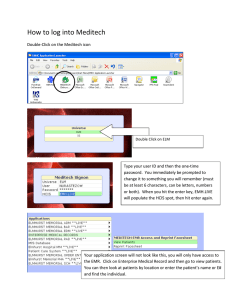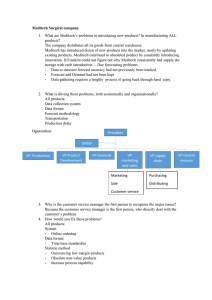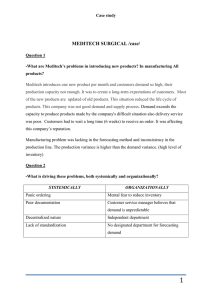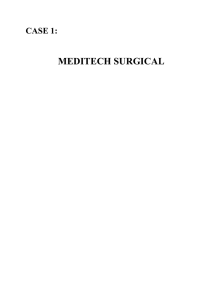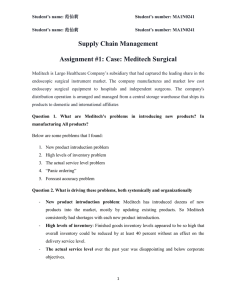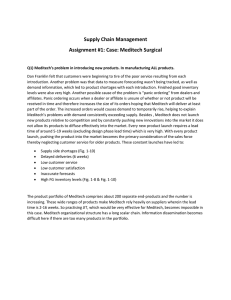Meditech Surgical
advertisement
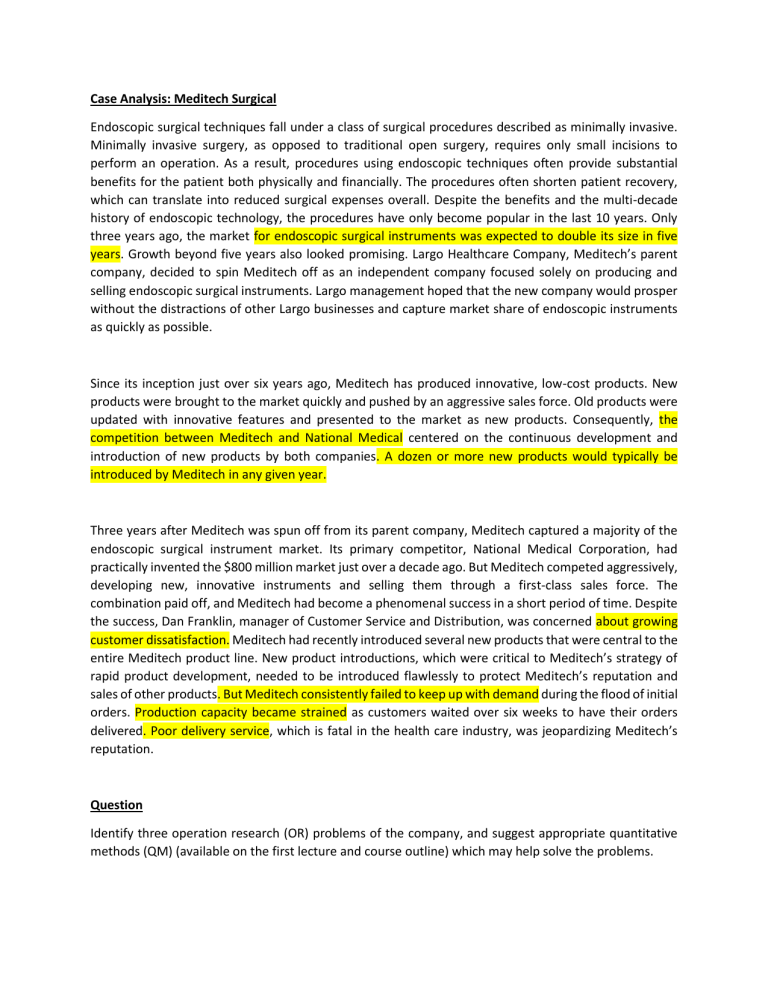
Case Analysis: Meditech Surgical Endoscopic surgical techniques fall under a class of surgical procedures described as minimally invasive. Minimally invasive surgery, as opposed to traditional open surgery, requires only small incisions to perform an operation. As a result, procedures using endoscopic techniques often provide substantial benefits for the patient both physically and financially. The procedures often shorten patient recovery, which can translate into reduced surgical expenses overall. Despite the benefits and the multi-decade history of endoscopic technology, the procedures have only become popular in the last 10 years. Only three years ago, the market for endoscopic surgical instruments was expected to double its size in five years. Growth beyond five years also looked promising. Largo Healthcare Company, Meditech’s parent company, decided to spin Meditech off as an independent company focused solely on producing and selling endoscopic surgical instruments. Largo management hoped that the new company would prosper without the distractions of other Largo businesses and capture market share of endoscopic instruments as quickly as possible. Since its inception just over six years ago, Meditech has produced innovative, low-cost products. New products were brought to the market quickly and pushed by an aggressive sales force. Old products were updated with innovative features and presented to the market as new products. Consequently, the competition between Meditech and National Medical centered on the continuous development and introduction of new products by both companies. A dozen or more new products would typically be introduced by Meditech in any given year. Three years after Meditech was spun off from its parent company, Meditech captured a majority of the endoscopic surgical instrument market. Its primary competitor, National Medical Corporation, had practically invented the $800 million market just over a decade ago. But Meditech competed aggressively, developing new, innovative instruments and selling them through a first-class sales force. The combination paid off, and Meditech had become a phenomenal success in a short period of time. Despite the success, Dan Franklin, manager of Customer Service and Distribution, was concerned about growing customer dissatisfaction. Meditech had recently introduced several new products that were central to the entire Meditech product line. New product introductions, which were critical to Meditech’s strategy of rapid product development, needed to be introduced flawlessly to protect Meditech’s reputation and sales of other products. But Meditech consistently failed to keep up with demand during the flood of initial orders. Production capacity became strained as customers waited over six weeks to have their orders delivered. Poor delivery service, which is fatal in the health care industry, was jeopardizing Meditech’s reputation. Question Identify three operation research (OR) problems of the company, and suggest appropriate quantitative methods (QM) (available on the first lecture and course outline) which may help solve the problems. https://www.scribd.com/doc/248455260/Homeworksimchi-Levidesigningandmanagingsupplychain140401173556-Phpapp01#
